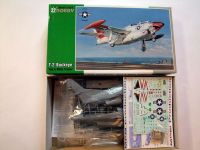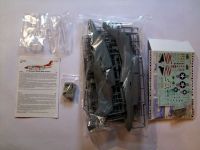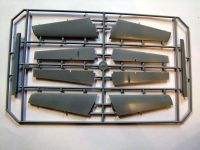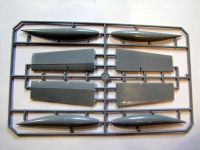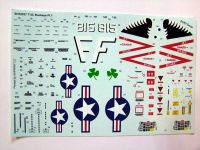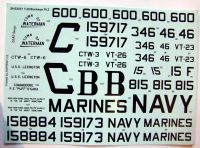Special Hobby | 1/32 T-2C Buckeye
Reviewed by Hubert Boillot
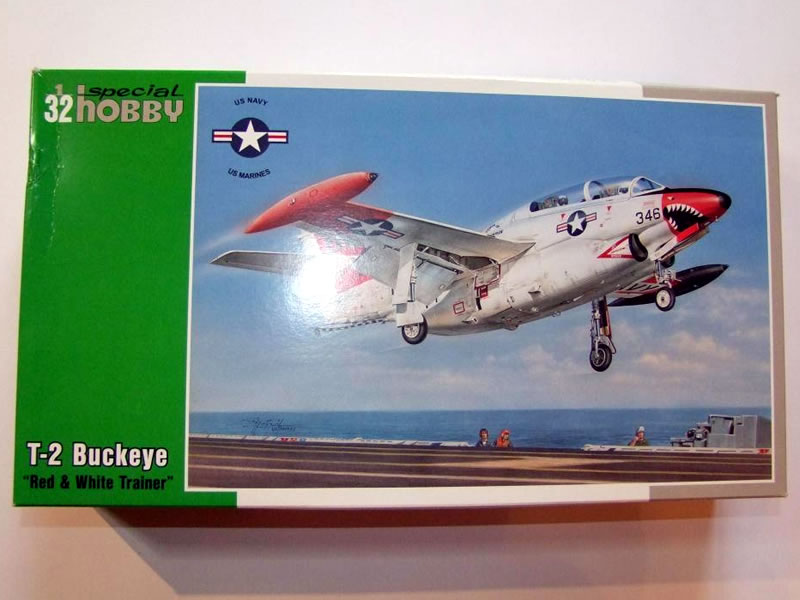
Background on the Original Bird
The T2 Buckeye was conceived as an advanced jet trainer for the US Navy, on a 1956 requirement that called for an aircraft able to train the new pilots to the specificities of jets and to qualify them for carriers.
North-American's offer was chosen to build this new trainer, designated the T2J-1. It thus followed a long line of trainers developed by NAA for the US Navy, starting with the SNJ-1 (T-6) and continuing with the T-28.
In some aspects, the T-2 was en evolution rather than a completely new airframe, using for instance the wing of the FJ-1 Fury, or the control systems of the T-28C, boosted by a new hydraulic system.
The first YTJ-2 flew on January 31st 1958 (almost exactly 56 years ago), and the first production trainer was delivered in 1959, becoming the "Buckeye" at that time. More than 200 T2-As were delivered.
Although capable, the single-engined T-2A was underpowered, and in 1962, the T-2B prototype with two J-60 engine made its first flight. It was then replaced in 1968 with the T-2C, powered by 2 GE J-85 engines, less powerful but more cost-efficient than the J-60, of which 231 were built.
In 1972, Venezuela ordered 12 de-navalised T-2Cs for the training/strike role, with wing stations for up to 3 500 lbs of ordnance. In 1976, Greece acquired 40 T-2Es, generally similar, but for the avionics suite, to the Venezuelan T-2Cs.
In Kit Form
The first 1/32 kit of the Buckeye, and at a decent price.
I have always loved the chubby look of the T-2, and longed for a kit of it in a "decent" scale.
For many years, the only kit available was the 1/72 Matchbox one. I believe, although I am not too sure, that Collect'Aire offered one in resin in 1/48 scale. Then, about 3 years ago, Two Bobs, known for their decal sets, announced a 1/48th scale T-2C in injected plastic, which was subcontracted to the Czech company Special Hobby as a short run kit. Initially well received, it was then criticised for a somewhat average fit (which could have been expected for a short-run injected plastic kit). The production was then reissued by Special Hobby, under its own label.
It is therefore not a complete surprise that Special Hobby capitalised on their 1/48th scale development to catch the train of growing demand for 1/32 kits and be the first to release a 1/32 scale kit of the T-2C, simultaneously with a Greek T-2E version.
Announced last year, the first pics of the model appeared in the wake of the Nürnberg toy fair end February. The availability of the kit was then announced on MPM/Special Hobby/CMK's e-shop site on February the 1st. I ordered mine on the 2nd (49,90 € + 6,63 € P&P) and received it (in France) on the 6th! Not bad!
References
There are plenty of references available on the T-2, especially on the net. Besides the host of individual photographs, there are also some very useful walkarounds.
Here are some links I have bookmarked in the process, as they provide excellent reference pics for use by anyone building the kit.
- http://www.philsaeronauticalstuff.com/t-2b/t-2b.html
- http://airwingspotter.com/us-navy-walkarounds/
- http://www.ipms.nl/walkarounds/walkaround-vliegtuigen-jets/563-walkaround-t2-buckeye.html
- http://www.primeport...ndex.php?Page=1
- http://flickrhivemin...can/Interesting
- http://svsm.org/gallery/t2_family
In print form, I have used as a primary reference the Naval Fighters #15 book in the famous Steve Ginter series. This book has provided some drawings in (almost) 1/72 scale, which I used for an initial accuracy check, although the drawings themselves have not been verified besides the basic dimensions accuracy. Other drawings are available, but I confess I have not uploaded and printed them at this stage.
In-box Review
As the title says, this is an in-box review. Some comments may therefore be contradicted in the future by further more detailed analysis and, more importantly, by the actual build experience.
So here are the photos and first impressions after opening the box.
The box is a sturdy 46 x26 x 8 cm (18 x 10.5 x 3.2 inches) two-part cardboard box. The box art is similar the 1/48th scale previous release.
Inside the box, you have 7 sprues of parts in injected grey plastic, plus a sprue for the two fuselage halves, bagged in a resealable plastic bag. The transparent canopy is bagged separately, as is another small sprue with the windscreen and the other small transparent parts (lights for the wingtips for instance). This is complemented by two resin ejector seats in a small bag, and another small bag of resin small details (main gear doors retraction links, inside of airbrakes wells, etc.) The decal sheet is in two parts, offering markings for 3 red and white T-2Cs, two for the US Navy, of which one with a sharkmouth on the nose, and one for the US Marines. The instrument panels are also represented on the decal sheet, as well as a comprehensive host of stencils.
This is completed by a 16 pages instruction booklet in A5 format, with 39 building steps, and the decoration guides for the 3 proposed versions.

I have counted 214 parts (give or take +/- 2 as I have not done a recounting), of which 12 transparent ones and 17 in resin. Some parts are on the sprues for T-2E version and should not be used.
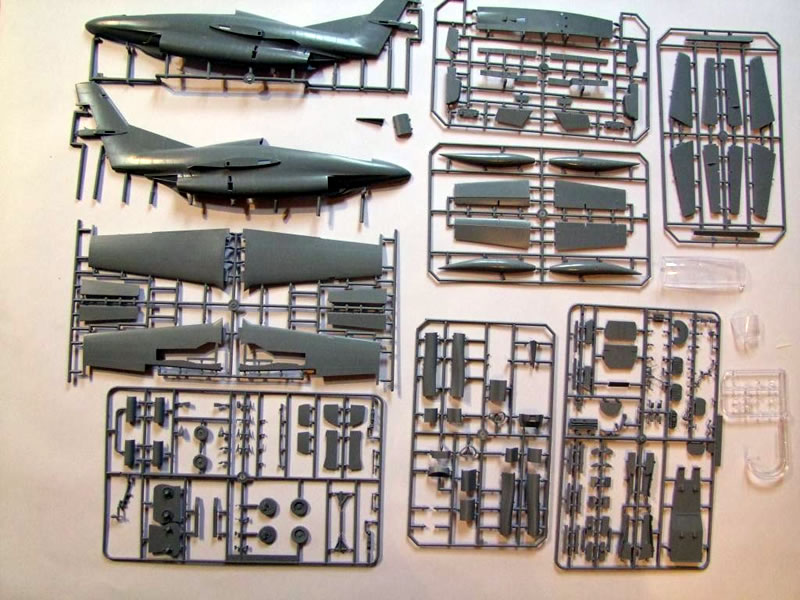
The first impression is very good, with very fine surface detail, both finely engraved recessed panel lines and flush rivets, and raised panels where necessary. The quality of the engraving is very good, and close to the best you can expect nowadays.
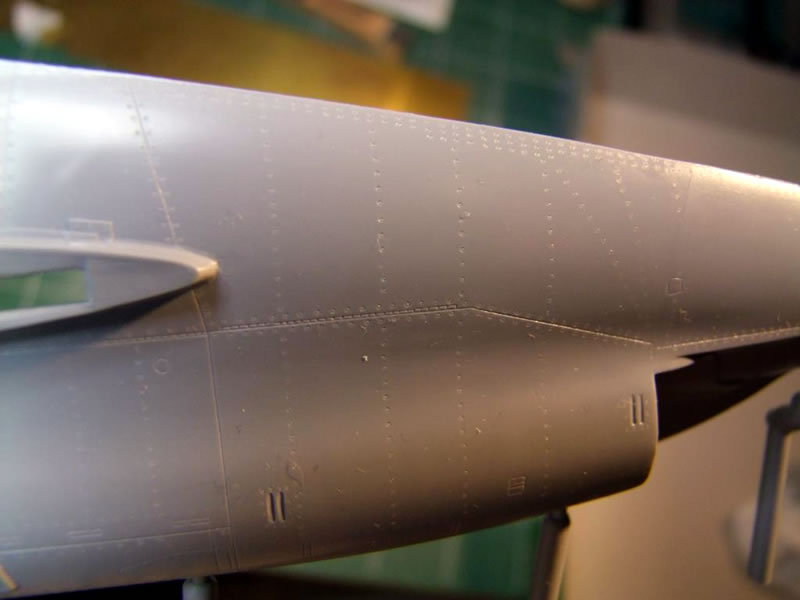
The kits is molded with all flying and moving surfaces (flaps, ailerons, rudder, elevators) moulded separately.
It also features full length intakes (each split in two vertical halves) for the jet engines, ending on a bulkhead with front fan faces. The intake trunks have the correct curved shape. There is also a bulkhead with the exhaust turbines, to which the two tailpipes (each molded in two halves), of apparently the right length, are fixed.

The inside structure of the main gear wheel wells is correctly represented, although I am sure some will want to add more details. This wells are only marred by ejectors marks. Fortunately, those are protruding, and can be removed with a small chisel. Filling them in the middle of the detailed ribs' structure would have been more difficult.
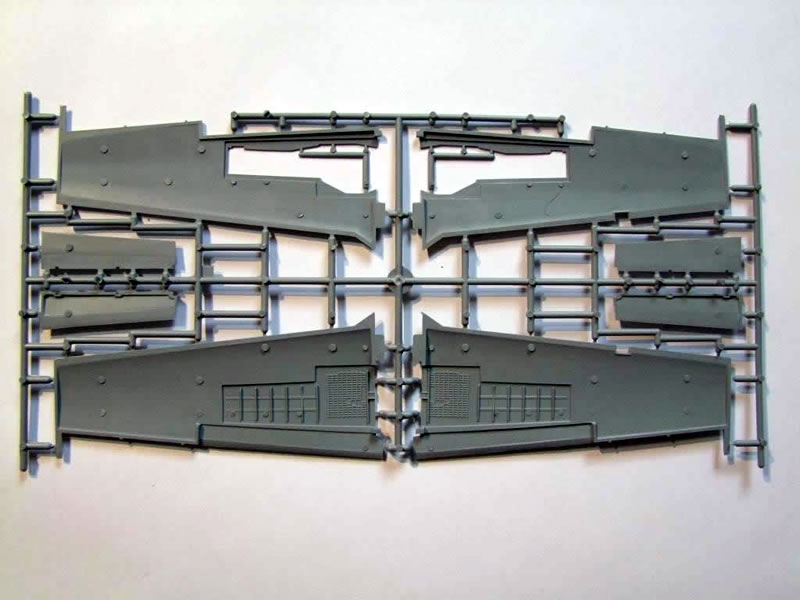
The cockpit is nicely represented, with the instrument panels featuring some nicely engraved detail (to the point where I doubt the decals will be able to fit the panels, even with plenty of decal softener). The back of rear instrument panel featuring the raised instruments is represented as a separate part, requiring only some cabling for enhanced realism.
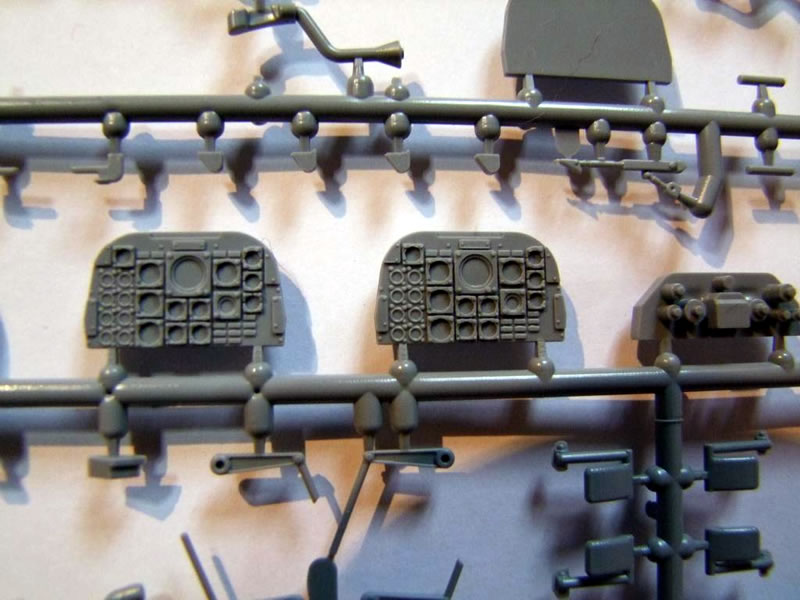
The rudder pedals are there as well, each individually represented, and the side consoles are moulded with relief details (and separate throttles), although in a first look the details seem a bit soft. Careful painting should however do justice to this representation.
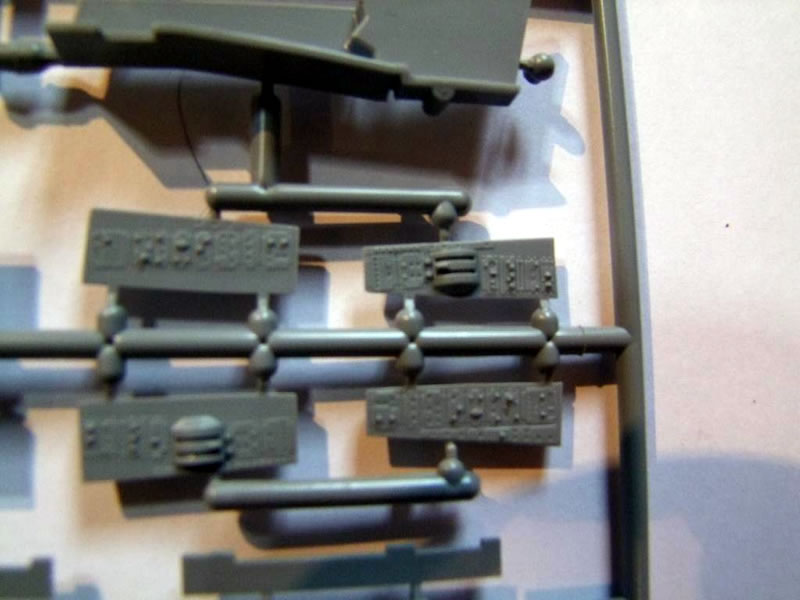
The side walls of the cockpit have some recessed ejector-pins marks, which should be easy to fill.

The pièce de résistance of the cockpit are the two resin-molded ejection seats, with very fine details and moulded-on harness. I initially felt their proportions (length vs height) were strange, but a rapid look at my available documentation seemed to indicate that SH have done their homework correctly on the subject.
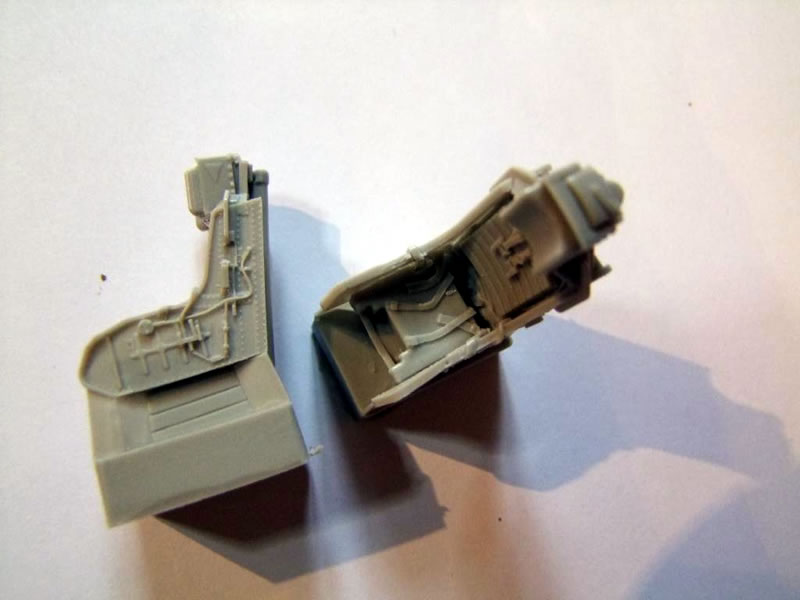
The wheels are correctly detailed, but I am sure some resin AM sets will achieve greater finesse and realism.
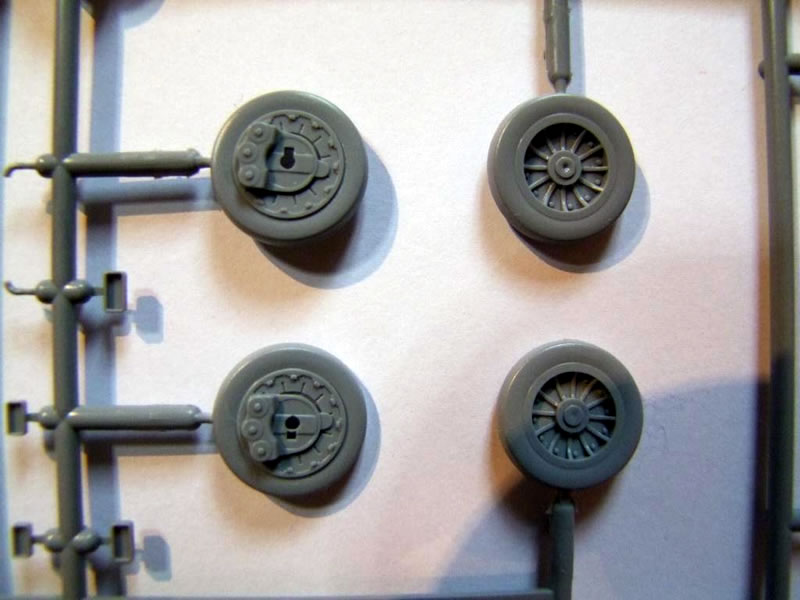
I did a very rapid first check of mating the two fuselage halves. The fit, always a delicate issue with Special Hobby kits, seems OK, although I could already see that the bottom panel will need some trimming to fit between the two fuselage halves. The wing to fuselage joints appears correct as well, but may require a small dab of filler, nothing to worry about.
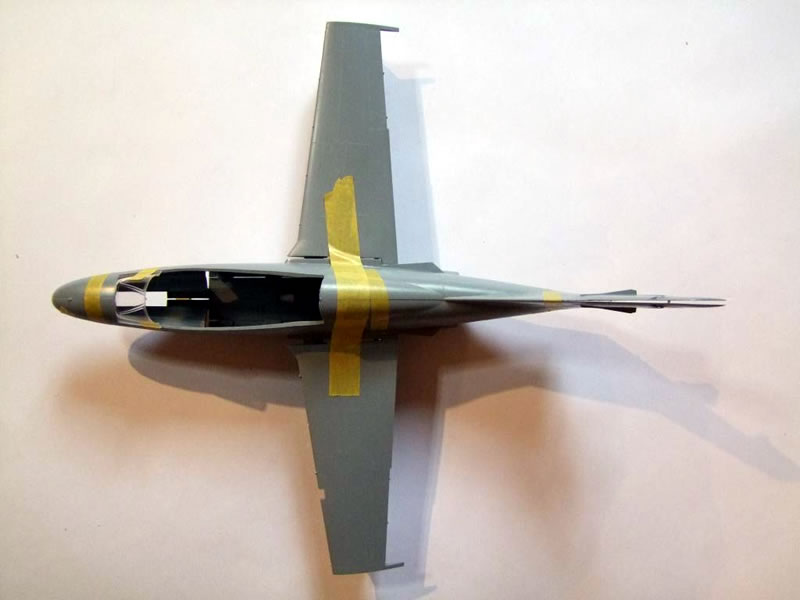
One potential area of trouble is the jet intakes. Each is represented with 5 parts : two inside trunk halves, two external intake halves, completed by a one-piece lip. On some previous SH kits, like the F-80, the fit in this area was ranging from difficult to horrible. I have not tried the fit of the intakes for the T-2C, so cannot prejudge whether this will be a difficult area or not. I just know I will do a lot of dry fitting beforehand, just to be sure everything falls together with minimum filling and sanding.
The front gear well is correctly represented, including the rounded rear part that protrudes in the front cockpit. The front gear is also well represented with its leg slightly offset from the center line, as on the real aircraft.
The transparent parts, including the windscreen and the huge canopy are thin and very clear, thus enabling a good view on the cockpit, even if you decide to close the canopy. Be careful when manipulating these parts. When I cut the front pouring stub of the canopy to test its fit, I induce a small fatigue crack in the clear plastic. The complex windscreen to fuselage fairing is effectively rendered by SH, which I did not see in the first place, a testimony of the clarity of the parts. It may be a bit overdone, but nothing that some careful filing cannot sort out.
The resin details are very fine, to the point of being fragile. I broke one of the main gear links when putting them back in their bags after making photos.
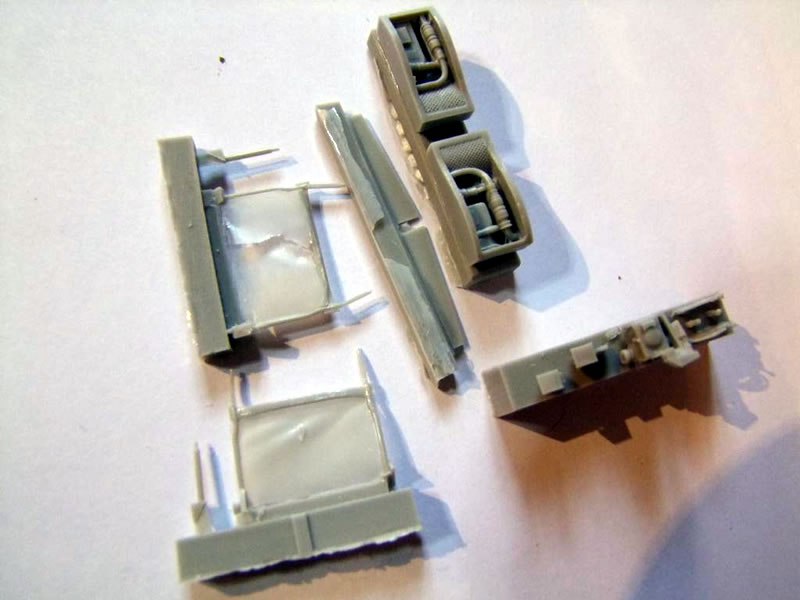
The decal sheet is printed in register, which is a good point. The stencils, although the texts are correct – not always the case on some kits – lack finesse, and the printing of the decals could have been done slightly better, resulting in smaller and finer print for the stencils' texts, and less wavy straight lines. But this is a remark done with my personal professional background in this field, and after I used a 5x magnifying linen-tester. Most will be very happy with what they see.
A Quick Accuracy First Check
We have had debates on LSP about "rivet counting" on new kits. I see myself more in the camp of the rivet counters. The comments below should therefore be read bearing in mind my own personal bias towards "nitpicking" accuracy.
I compared the kit with only one set of drawings, the (almost) 1/72 drawings published in the Steve Ginter #15 Naval fighters, which I blew to 1/32 on a photocopier (which in itself may induce some distortions). I have not checked whether these drawings are themselves accurate, nor have I compared them to other drawings. So any comparison with this reference must at this stage be taken with a grain of salt. Just to reinforce the "caution" message, the top and bottom plan view of the wings do not exactly match on the drawings.
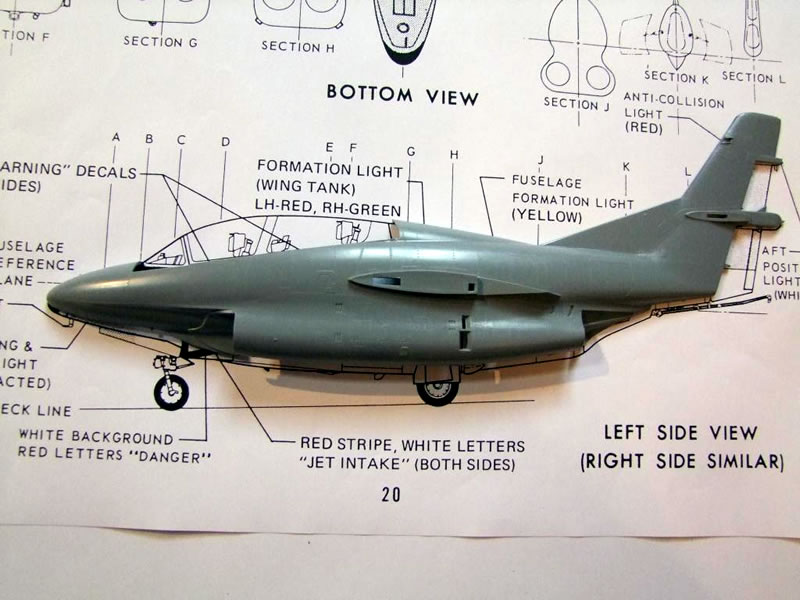
Anyway, the kit compares favorably in both length, span and height with the published dimensions. The side profile checks almost 100 with the drawings. The only area to verify further is the bottom rear fuselage, where there is a notable discrepancy between the kit and the drawing. Again, I'm not sure at this stage which one is right between the Ginter drawing and SH's kit.
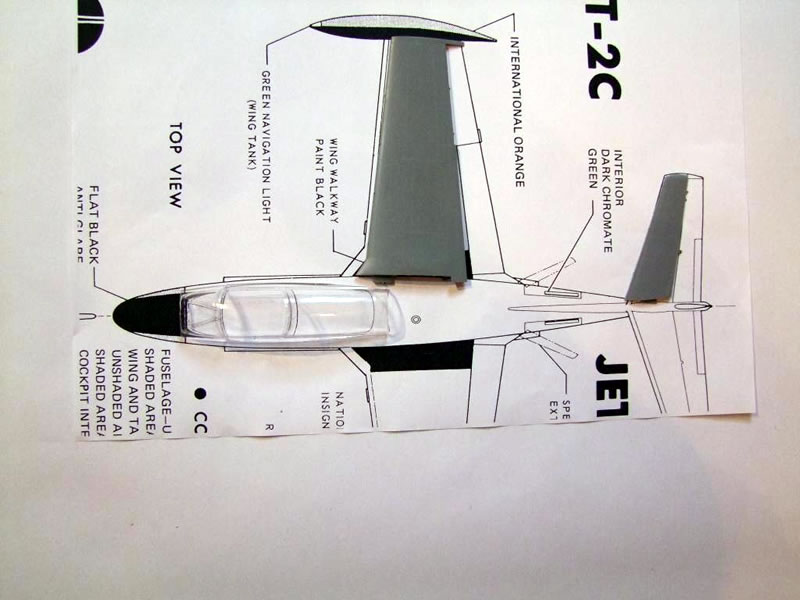
The plan view of the kit's wings appear definitely smaller than the drawings, being narrower in chord, and with a much smaller leading edge apex. As long as I have not found factory dimensions on the true chord of the wing, I cannot say which is right. However, one pic of the belly of an in-flight T-2B I found, would lead me to believe that the interpretation of the wing planform and leading edge apex is more accurate in the kit than in the Naval Fighters #15 drawings.
Overall, the rotund shapes of the original seem to have been captured, and be a VERY decent scale representation of the original, but for one area which bears further investigation from my part:
The Canopy Question
When I first saw the Nürnberg pics, I thought the canopy looked strangely flattened.
The length and height of both the windscreen and the canopy are consistent with the drawings. If one area of the canopy is to be questioned, it is in terms of width. Compared to the drawings, both the windscreen and the canopy seem about 2 mm too wide, and this may cause the "flattened" first impression.
I am always wary of using photos to assess relative dimensions, as the photos themselves can induce a fair degree of distortion. Nevertheless, I roamed the net looking for more information and good head-on photos to progress further on this question.
Let's say that in the end I did not find many photos with a good enough head-on view to make a more definitive assessment at this stage.
Besides the overall width question, some comments have already been made that the flat part of the windscreen itself has been botched up by SH, being too wide at the base.
The Ginter drawings give a width of the base of the windscreen of about 15 mm, and the measurement of the kit is 15.5 mm. I think we are in the right ballpark, and am therefore not sure this area is wrong, or wronger than the overall windscreen / canopy.
In conclusion, as long as some check against direct, or factory, measurements of the real parts has not been done, I cannot affirm with certainty that SH's canopy and windscreen are right or wrong. So, for my current lack of clearer evidence, I am willing to give SH the benefit of doubt, and cannot go beyond expressing concern, or state firmly that SH have made a blunder in this area. I am just trying to be fair, but if I find later that new evidence show a mistake, I'll state it just as clearly.
Conclusion
I was really excited to see a 1/32 kit of the T-2C Buckeye being issued.
The overall impression is that SH have produced a very good kit, very close to the best standards of the industry. It is very finely detailed, and engraved, and will result in a great looking representation of the T-2C, at a price which remains reasonable for a 1/32 kit.
In my view, having many 1/32 Special Hobby kits in my stash, and having seen the building threads of some, the T-2C is probably their best kit to date. Of course, this needs to be confirmed by the actual building of the kit, but the first impression is that the fit problems so often associated with these short-run kits should be less present with this new release.
The only shortfalls this preliminary review has highlighted are the finesse of the stencils decals, and a question mark about the windscreen/canopy width.
Some pics of the assembled kit, supplied by Special Hobby, have already been published on another forum. From those, my conclusion for the time being is that Special Hobby have done a good job on the whole kit, including the canopy, and that, even if the canopy is effectively off by 2 mm, the overall impression will not be marred by that point.
All in all, I believe we have a winner here, and my personal opinion is a warm recommendation. Kudos to Special Hobby! It will result in a really good-looking 1/32 Buckeye!
Review model courtesy of my wallet.
© Hubert Boillot 2014
This review was published on Tuesday, February 11 2014; Last modified on Tuesday, February 11 2014

